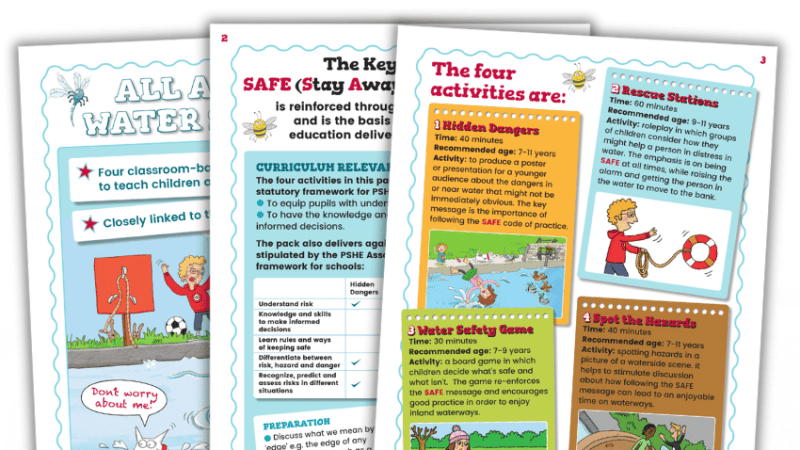Can We Teach Children To Be Happy?

With schools seeing more and more students fall prey to stress, anxiety and depression, can teachers do anything to reverse the trend? Lloyd Burgess asks the experts…

This school year, ChildLine delivered 3,077 counselling sessions about exam stress to young people – a rise of 9% on 2014/15. About a quarter of these took place in the May exam season. The NSPCC found that fear of failure and not wanting to disappoint parents were the biggest factors, with children struggling with tearfulness, anxiety, sleeplessness, depression, eating disorders, self harm and suicidal thoughts.
Not only are a growing number of students suffering from various mental health issues, but the average onset age has got considerably younger. “In 1967 it was late-40s/early 50s, but now it’s around 11-13 years of age,” says Claire Kelly, director of the Mindfulness in Schools Project (MiSP). It᾿s a trend that has not gone unnoticed by teachers, education unions and parent groups such as Let Our Kids Be Kids – all of whom are concerned about how the DfE᾿s focus on assessment and testing is amplifying the pressure on primary students.
And it᾿s not just tests. “Life in general is much busier,” says Claire. “Children will pick that up from parents, carers and teachers who are also feeling the strain and therefore not modelling a calm, measured approach to life.” Speaking to Dr Poppy Nash, a lecturer in education at the University of York who specialises in forensic and clinical psychology, it seems that herein lies a real danger: “The seeds of mental health issues can be sown at a very young age. These problems can start as early as nursery and through primary school, and generally peak around 18 or onwards.” With this in mind, you might expect improving pupils᾿ health to be at the heart of the curriculum. Yet there remains a large degree of scepticism over the notion that we can ‘teach happiness᾿, which means even successful evidence-based practices are vulnerable to being seen as flighty or frivolous and cast aside… “In the early 2000s, programmes such as Social and Emotional Aspects of Learning (SEAL), which was implemented through the Labour government, were doing fantastic things,” says Dr Nash. “Then within a few months of the Coalition government coming in, these programmes disappeared because the DfE’s evaluation decided they weren’t strong enough to promote.” Since that time, the duty to develop children᾿s ‘character᾿ has been introduced, but with PSHE still non-statutory on the primary curriculum, there remains a question mark over where pupils᾿ wellbeing stands in relation to the drive for attainment.
Why teach mindfulness?
So, if we know that children are encountering difficulties with mental health at a younger age, and we know at least some of the causes, it begs the question – can we teach them to be happy? “It’s probably quite controversial, but I think we’ve gone beyond that,” says Dr Nash. “The idea of ‘happiness’ feels superficial when we’ve got these much deeper mental health issues going on. And what is ‘happiness’, anyway?” Back in 2006 when Wellington College started its now widely-known wellbeing course founded on the concept of ‘mindfulness᾿, it received a lot of criticism from those who questioned its legitimacy. “It came from people whose understanding of happiness was basically ‘feeling good’,” says Ian Morris, author of Teaching Wellbeing and Happiness in Schools, who now runs the course. “But we focus on the Ancient Greek philosophy where human happiness consists of living well – in other words, the ability to make the right decision in any given situation.” Similarly, Dr Nash subscribes to the notion that happiness is “being as emotionally well as possible” – that it’s much more about coping and contentment than grinning ecstatically all day long. But even with that more realistic definition, it’s still not a case of saying ‘do X, Y and Z and you’ll be happy’ as Professor Sonia Blandford, CEO of Achievement for All (AfA), explains: “It’s about providing an environment to develop people᾿s sense of wellbeing,” she says. “Happiness is about your place in the world, and for schools it should absolutely be about having an ethos of accommodating every single child, every single day. They all need to understand that they’re identified as valuable and valued individuals within the school and the community.
Get a head-start
Creating a whole-school ethos, however, is not an overnight fix. It’s a big undertaking. So, where to begin? It’s a question that MiSP is asked a lot. “We always say start with the staff,” says Claire Kelly. “The students aren’t going to flourish if the person trying to impart these lessons is struggling and depressed and not coping themselves. Training staff on the benefits of resilience and mindfulness helps them model behaviour and set the tone in the classroom.” When Adrian Bethune trained staff in his new school on growth mindset and mindfulness, most simply weren’t aware of what these terms meant, or what the benefits of implementing them could be. “Giving them ideas and resources, such as how to meditate with their classes, and showing them what growth mindset is, that’s crucial for them to effectively bring out the best in these lessons.” Adrian introduced the teachers, and in turn the school, to a complete programme covering physical and mental health, as well as happiness and wellbeing. “We’re trying to get the kids fit and healthy, trying to get them to meditate and experience a sense of calm, and we’re also teaching them about their brains,” he says. “Each class gets mini neuroscience lessons so they understand how their brains work and how their bodies release happy hormones, such as oxytocin, when they do something good.” Both Adrian and Ian Morris at Wellington College agree, however, that lessons for young children can’t just be conceptual. “Almost every lesson has to have something practical at its core, something that will help children to live in a different way,” says Ian. “It’s all very well sitting around in a circle having a cosy chat about something, but unless that actually translates into children doing something differently it’s basically a waste of time.” One setting that has successfully integrated its programme across the whole school is Harehills Primary in Leeds. “It can’t just be ‘we’re doing PSHE for this hour’ and the rest of the time it disappears,” says assistant headteacher for Y5 and Y6, Catherine McMullen, “Emotional health and wellbeing is at the core of everything we do here, and our curriculum, lessons and coverage are built around it.” An example of this whole-school approach is that Harehills has a relationships policy, rather than a behaviour policy, something that Catherine believes is the reason they don’t have an issue with behaviour in their school. “The children are very aware of relationships,” she says. “We know not everyone is going to be best friends, and that sometimes people, children and adults will have arguments. We teach them how to repair those relationships so they can move on. It’s building a capacity and resilience to deal with something, reflect on it and learn from it.” It᾿s an approach that᾿s paid dividends with Ofsted, too, who last November graded the school outstanding for personal development, behaviour and welfare. “It’s important to point out that it’s not one single initiative, it’s a whole range of things that have developed over the years,” says Catherine. “It’s a big investment in time, and you won’t always get it right. Plus, the changes can be hard to measure quantitatively, which is where some people get frightened and revert back to thinking it’s all a bit woolly. But once everyone is invested, you’ll see changes with the way you deal with staff issues, the way relationships work, and the way in which children work and interact.”
The virtuous circle
It᾿s hard to escape the feeling that time spent meditating with the children is a luxury when there᾿s a curriculum to cover, but there is evidence that equipping young people with the tools to better manage mental health actually supports attainment. A 2014 Public Health England report [PDF] includes key evidence that education and health (both mental and physical) are closely linked, perhaps best summed up in the Chief Medical Officer᾿s verdict that promoting salubrity in schools, “Creates a virtuous circle, reinforcing children’s attainment and achievement that in turn improves their wellbeing, enabling children to thrive and achieve their full potential”. Essentially, happier children learn better. The DfE too recognises link between wellbeing and attainment. Its own ‘Mental Health and Behaviour’ departmental advice for school staff [PDF] acknowledges the need for schools to help their pupils succeed by, “Supporting them to be resilient and mentally healthy”. It also says that this relationship works both ways – that one way to promote students᾿ mental health is to instil “an ethos of setting high expectations of attainment for all pupils”. But while the evidence may be that happier pupils perform better academically, there are those – Ian Morris among them – who caution against using this as justification for any action. “People make claims about increased attainment and improved pupil behaviour and reduced anxiety and depression, and I’m sure those claims are legitimate,” he says. “But I’d hesitate to say you should introduce a wellbeing programme because it will give you better exam results or improved attendance. Do it because it’s the right thing to do.” If the point is to help children find contentment and satisfaction outside of school, perhaps educational attainment should not be the priority. After all, when Lord Richard Layard and colleagues at the London School of Economics looked at what leads to a happy, successful life (however abstract ‘happy and ‘successful’ may be), they found that educational achievement was the worst predictor of all [PDF], with almost no correlation between the two. The best predictor? Levels of wellbeing as children.
Modern Thinking
Dr Poppy Nash explains what aspects of today’s world of culture, technology and education can affect children’s mental health, and why they need to be aware of them…
Selfie reflection The huge influence of social media is new territory – children’s lives face constant online accountability. Eriksson’s psychological research shows the importance of developing not just a public self, but a private self; a sense of who we are that we draw on in times of crisis. But if their whole lives are out in the open, children don’t have a chance to develop that private self.
Best of unfriends Schools are doing well in de-stigmatising and demystifying mental health, so children don’t feel they need to hide it. But at the same time, there’s a lot of information online – with eating disorders, for example – on how to resist help. It’s a network or community that reinforces the behaviour, so that the young person actually wants that identity, which is really concerning.
Boys don’t cry Gender difference becomes more evident with age, with boys more likely to externalise their problems, perhaps through destructive behaviour, while girls internalise, leading to things like anxiety and self harm. Schools need to acknowledge gender differences, even from primary age, to equip boys and girls to be best able to cope.












